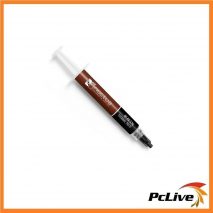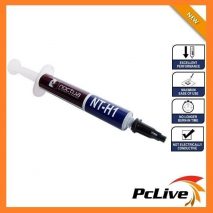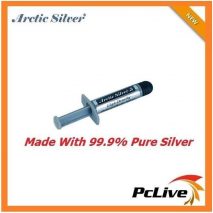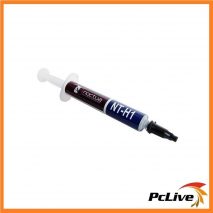Description

Features:
Made with micronized aluminum oxide and boron nitride:
Arctic Alumina uses a layered composite of three unique shapes and sizes of ceramic particles to maximize particle-to-particle contact area and thermal transfer. This exclusive combination provides performance exceeding most metal based compounds.
Controlled triple phase viscosity:
Arctic Alumina does not contain any silicone. The suspension fluid is a proprietary mixture of advanced polysynthetic oils that work together to provide three distinctive functional phases. As it comes from the tube, Arctic Alumina’s consistency is engineered for easy application in a thin even layer. During the CPU’s initial use, the compound thins out to enhance the filling of the microscopic valleys and ensure the best physical contact between the heatsink and the CPU core. Then the compound thickens slightly over the next 50 to 200 hours of use to its final consistency designed for long-term stability.
NOTE: (This should not be confused with conventional phase change pads that are pre-attached to many heatsinks. Those pads melt each time they get hot then re-solidify when they cool. The viscosity changes that Arctic Alumina goes through are much more subtle and ultimately much more effective.)
Absolute Stability:
Arctic Alumina will not separate, run, migrate, or bleed.
Electrical Insulator:
Arctic Alumina Compound is a pure electrical insulator, neither electrically conductive nor capacitive.
Clean Up:
Arctic Alumina Compound cleans off easily from CPUs and heatsinks. In most cases, simply wiping with a dry cloth will easily remove the compound from the CPU and heatsink.
14 gram tubes
(About 9cc) At a layer 0.003″ thick, one tube will cover approximately 192 square inches.
Specifications:
Thermal conductivity: >4.0 W/mK (Hot Wire Method Per MIL-C-47113)
Thermal Resistance: <0.010°C-in2/Watt (0.001 inch layer)
Temperature Limits: Peak: – 40°C to > 160°C Long-Term: – 40°C to 125°C
Lower full load core temperatures:
2 to 10 degrees centigrade lower CPU full load core temperatures than standard thermal compounds or thermal pads.
When measured with a calibrated thermal diode imbedded in the CPU core.














